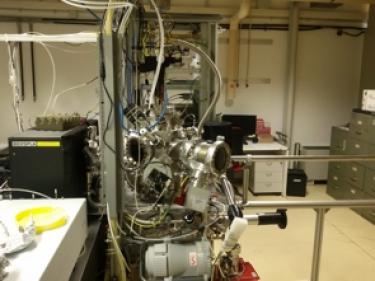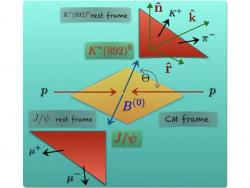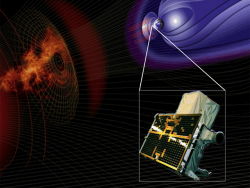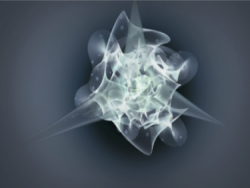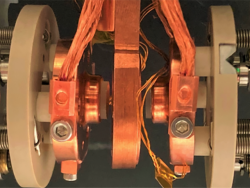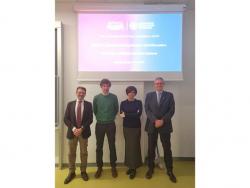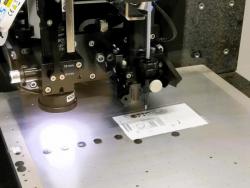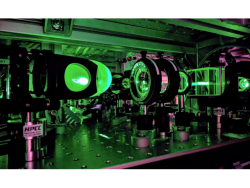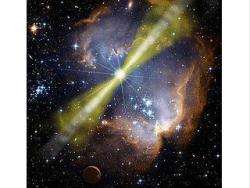Recent Relevant Publications
2021
- T. Fontanot, S. Donato, F. Di Lillo, D. Dreossi, L. Rigon, R. Longo, S. Dal Zilio, R. Ciancio, S. Paroni, and E. Vesselli, “On the origin of surface and interface defects associated with the growth of Al‐coated thermoplastic heterostacks”: Surf. Int. Analysis 53 (2021) 350, DOI: 10.1002/sia.6923.
- V. Pramhaas, M. Roiaz, N. Bosio, M. Corva, C. Rameshan, E. Vesselli, H. Grönbeck, and G. Rupprechter, “Interplay between CO disproportionation and oxidation: on the origin of the CO reaction onset on ALD-grown Pt/ZrO2 model catalysts”: ACS Catal. 11 (2021) 208, DOI: 10.1021/acscatal.0c03974.
- E.Vesselli, “Stabilization and activation of molecular oxygen at biomimetic tetrapyrroles on surfaces: from UHV to near-ambient pressure”: Nanoscale Adv, 3 (2021) 1319, DOI: 10.1039/D0NA00827C.
- H.M. Sturmeit, I. Cojocariu, A. Windischbacher, P. Puschnig, C. Piamonteze, M. Jugovac, A. Sala, G. Comelli, A. Cossaro, A. Verdini, L. Floreano, M. Stredansky, E. Vesselli, C. Hohner, M. Kettner, J. Libuda, C.M. Schneider, G. Zamborlini, M. Cinchetti, and V. Feyer, “Room-temperature on-spin-switching and tuning in a porphyrin-based multifunctional interface”: Small 17 (2021) 2104779, DOI: 10.1002/smll.202104779.
- F. Armillotta, E. D’Incecco, M. Corva, M. Stredansky, J.-J. Gallet, F. Bournel, A. Goldoni, A. Morgante, E. Vesselli, and A. Verdini, “Room temperature self-metalation of porphyrins at the solid-gas interface”: Angewandte Chemie IE 60 (2021) 25988, DOI: 10.1002/anie.202111932.
2020
- I. Cojocariu, H.M. Sturmeit, G. Zamborlini, A. Cossaro, A. Verdini, L. Floreano, E. D’Incecco, M. Stredansky, E. Vesselli, M. Jugovac, M. Cinchetti, V. Feyer, and C. M. Schneider, “Evaluation of molecular orbital symmetry via oxygen-induced charge transfer quenching at a metal-organic interface”: Appl. Surf. Sci. 504 (2020) 144343, DOI: 10.1016/j.apsusc.2019.144343.
- E. Vesselli, “Tetrapyrroles at near-ambient pressure: porphyrins and phthalocyanines beyond the pressure gap”: J. Phys. Materials 3 (2020) 022002, DOI: 10.1088/2515-7639/ab7ab2.
- M. Stredansky, S. Moro, M. Corva, M. Jugovac, G. Zamborlini, V. Feyer, C.M. Schneider, I. Cojocariu, H.M. Sturmheit, M. Cinchetti, A. Verdini, A. Cossaro, L. Floreano, and E. Vesselli, “Vibronic Fingerprints of the Nickel Oxidation States in Surface-Supported Porphyrin Arrays”: J. Phys. Chem. C 214 (2020) 6297, DOI: 10.1021/acs.jpcc.0c01387.
- T. Fontanot, J. Audenaert, P. Hanselaer, I. Pecorari, V. Lughi, E. Vesselli, S. Paroni, and F. Leloup, “BRDF characterization of Al-coated thermoplastic polymer surfaces”: J. Coat. Technol. Res. XX (2020) YYY, DOI: 10.1007/s11998-020-00361-0.
- H. Sturmheit, I. Cojocariu, M. Jugovac, A. Cossaro, A. Verdini, L. Floreano, A. Sala, G. Comelli, S. Moro, M. Stredansky, M. Corva, E. Vesselli, P. Pusching, C.M. Schneider, V. Feyer, G. Zamborlini, and M. Cinchetti, “Molecular anchoring stabilizes low valence Ni(I)TPP on copper against thermally induced chemical changes”: J. Mater. Chem. C 8 (2020) 8876, DOI: 10.1039/D0TC00946F.
- F. Armillotta, A. Pividori, M. Stredansky, N. Seriani, and E. Vesselli, “Dioxygen at biomimetic single metal-atom sites: activation or stabilization? The case of CoTPyP/Au(111)”: Topics Catal., (2020), DOI: 10.1007/s11244-020-01333-9.
2019
- M. Corva, F. Mohamed, E. Tomsic, M. Rinaldi, C. Cepek, N. Seriani, M. Peressi, and (*) E. Vesselli, “Learning from Nature: Charge Transfer and Carbon Dioxide Activation at Single, Biomimetic Fe Sites in Tetrapyrroles on Graphene”: J. Phys. Chem. C 123 (2019) 3916, DOI: 10.1021/acs.jpcc.8b11871.
- T. Fontanot, D. Ermacora, G. Simnetti, S. Raducci, E. Vesselli, and S. Paroni, “An automatic visual inspection system to scan outer lenses of automotive rear lamps”: SPIE Proceedings 11056 (2019) 1105624, DOI: 10.1117/12.2525435.
- B. Bozzini, A. Previdi, M. Amati, M. Bevilacqua, G. Cordaro, M. Corva, A. Donazzi, G. Dotelli, L. Gregoratti, R. Pelosato, M. Vorokhta, and E. Vesselli, “In situ near-ambient pressure X-ray photoelectron spectroscopy discloses the surface composition of operating NdBaCo2O5+ solid oxide fuel cell cathodes”: J. Power Sources 436 (2019) 226815, DOI: 10.1016/j.jpowsour.2019.226815.
- F. Rossi, M. Bevilacqua, B. Busson, M. Corva, A. Tadjeddine, F. Vizza, E. Vesselli, and B. Bozzini, “An in situ IR-Vis Sum Frequency Generation Spectroscopy Study of Cyanide Adsorption during Zinc Electrodeposition”: J. Ele. Chem. 855 (2019) 113641, DOI: 10.1016/j.jelechem.2019.113641.
2018
- M. Corva, F. Mohamed, E. Tomsic, Z. Feng, T. Skala, G. Comelli, N. Seriani, M. Peressi, E. Vesselli, “Substrate- to laterally-driven self-assembly steered by Cu nanoclusters: the case of FePcs on an ultrathin alumina film”: ACS Nano 12 (2018) 10755, DOI: 10.1021/acsnano.8b05992.
- M. Corva, A. Ferrari, M. Rinaldi, Z. Feng, M. Roiaz, C. Rameshan, G. Rupprechter, R. Costantini, M. Dell’Angela, G. Pastore, G. Comelli, N. Seriani, and E. Vesselli, “Vibrational fingerprint of localized excitons in a 2D metalorganic crystal”: Nat. Commun. 9 (2018) 4703, DOI: 10.1038/s41467-018-07190-1.
2017
- N. Podda, M. Corva, F. Mohamed, Z. Feng, C. Dri, F. Dvorak, V. Matolin, G. Comelli, M. Peressi, and E. Vesselli, "Experimental and Theoretical Investigation of the Restructuring Process Induced by CO at Near Ambient Pressure: Pt Nanoclusters on Graphene/Ir(111)": ACS Nano 11 (2017) 1041, DOI: 10.1021/acsnano.6b07876.
- E. Vesselli, M. Peressi, “Nanoscale control of metal clusters on templating supports” in “Morphologcal, compositional, and shape control of materials for catalysis”, p. 285-315, vol. 177, Studies in Surface Science and Catalysis, P. Fornasiero and M. Cargnello eds., Elsevier (2017), ISBN: 9780128050903.
- B. Bozzini, M. Amati, C. Mele, A. Knop-Gericke, E. Vesselli, “An in situ near-ambient pressure X-ray Photoelectron Spectroscopy study of CO2 reduction at Cu in a SOE cell”: J. Elechem. 799 (2017) 17, DOI: 10.1016/j.jelechem.2017.05.011.
- E. Vesselli, M. Rizzi, S. Furlan, X. Duan, E. Monachino, C. Dri, A. Peronio, C. Africh, P. Lacovig, A. Baldereschi, G. Comelli, and M. Peressi, “Tunability of the CO adsorption energy on a Ni/Cu surface: site change and coverage effects.”: J. Chem. Phys. 146 (2017) 224707, DOI: 10.1063/1.4985657.
2016
- M. Corva, E. Vesselli, "Room Temperature Carbonylation of Iron-Phthalocyanines Adsorbed on a Single Crystal Metal Surface: an in Situ SFG Investigation at Near-Ambient Pressure": J. Phys. Chem. C 120 (2016) 22298, DOI: 10.1021/acs.jpcc.6b05356.
- M. Roiaz, E. Monachino, C. Dri, M. Greiner, A. Knop-Gericke, R. Schlögl, G. Comelli, and E. Vesselli, “Reverse water-gas shift or Sabatier methanation on Ni(110)? Stable surface species at near-ambient pressure”: J. Am. Chem. Soc. 138 (2016) 4146, DOI: 10.1021/jacs.5b13366.
- M. Corva, Z. Feng, C. Dri, F. Salvador, P. Bertoch, G. Comelli, and E. Vesselli, “Carbon dioxide reduction on Ir(111): stable hydrocarbon species at near-ambient pressure”: PhysChemChemPhys 18 (2016) 6763, DOI: 10.1039/c5cp07906c.
2015
- Z. Feng, S. Velari, A. Cossaro, C. Castellarin-Cudia, A. Verdini, E. Vesselli, C. Dri, M. Peressi, A. De Vita, and G. Comelli, “Trapping of charged gold adatoms by dimethyl sulfoxide on a gold surface”: ACS Nano 9 (2015) 8697, DOI: 10.1021/acsnano.5b02284.
- J.A. Olmos-Asar, Erik Vesselli, A. Baldereschi, and M. Peressi, “Towards optimal seeding for the synthesis of ordered nanoparticle arrays on alumina/Ni3Al(111)”: PhysChemChemPhys 17 (2015) 28154, DOI: 10.1039/c5cp00304k.
- B. Bozzini, M. Amati, P. Bocchetta, S. Dal Zilio, A. Knop-Gericke, E. Vesselli, and M. Kiskinova, “An in situ near-ambient pressure X-ray Photoelectron Spectroscopy study of Mn polarised anodically in a cell with solid oxide electrolyte”: Electrochimica Acta 174 (2015) 532, DOI: 10.1016/j.electacta.2015.05.173.
- J.A. Olmos-Asar, E. Monachino, C. Dri, A. Peronio, C. Africh, P. Lacovig, G. Comelli, A. Baldereschi, N. Peressi, and E. Vesselli, “CO on supported Cu nanoclusters: coverage and finite size contributions to the formation of carbide via the Boudouard process”: ACS Catal. 5 (2015) 2719, DOI: 10.1021/cs501361h.
2014
- J.A. Olmos-Asar, E. Vesselli, A. Baldereschi, M. Peressi, “Self-seeded nucleation of Cu nanoclusters on Al2O3/Ni3Al(111): an ab-inintio investigation”: PhysChemChemPhys 16 (2014) 23134; DOI: 10.1039/C4CP03271C.
- M. Filiasi, G. Livan, M. Marsili, E. Vesselli, and E. Zarinelli, “On the concentration of large deviations for fat tailed distributions, with application to financial data”: J. Stat. Phys. 9 (2014) 09030, DOI: 10.1088/1742-5468/2014/09/P09030.
- M. Peressi and E. Vesselli, “Combining surface science experiments and numerical simulations”: Il Nuovo Saggiatore 30 (2014) 4.
- E. Monachino, M. Greiner, A. Knop-Gericke, R. Schlögl, C. Dri, E. Vesselli, and G. Comelli, “Reactivity of carbon dioxide on nickel: role of CO in the competing interplay between oxygen and graphene”: J. Chem. Phys. Lett. 5 (2014) 1929, DOI: 10.1021/jz5007675.
- M. Bevilacqua, J. Filippi, A. Lavacchi, A. Marchionni, H.A. Miller, W. Oberhauser, E. Vesselli, and F. Vizza, “Energy saving in the conversion of CO2 and ethanol to fuels and raw chemicals by an electrolytic device”: En. Technol. 2 (2014) 522, DOI: 10.1002/ente.201402014.
2013
- H.A. Miller, F. Vizza, M. Bevilacqua, J. Filippi, A. Lavacchi, A. Marchionni, W. Oberhauser, S. Moneti, M. Marelli, E. Vesselli, and M. Innocenti, “Nanostructured Fe-Ag electrocatalysts for the oxygen reduction reaction in alkaline media”: J. Mat. Chem. A 1 (2013) 13337, DOI: 10.1039/c3ta12757e.
- E. Vesselli, E. Monachino, M. Rizzi, S. Furlan, X. Duan, C. Dri, A. Peronio, C. Africh, P. Lacovig, A. Baldereschi, G. Comelli, and M. Peressi, “Steering the chemistry of carbon oxides on a NiCu catalyst”: ACS Catal. 3 (2013) 1555, DOI: 10.1021/cs400327y.
2012
- M. Rizzi, S. Furlan, M. Peressi, A. Baldereschi, C. Dri, A. Peronio, C. Africh, P. Lacovig, E. Vesselli, and G. Comelli, “Tailoring bimetallic alloy surface properties by kinetic control of self-diffusion processes at the nanoscale”: J. Am. Chem. Soc. 134 (2012) 16827, DOI: 10.1021/ja307294p.
